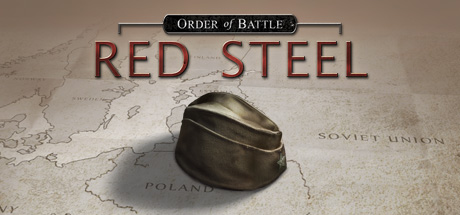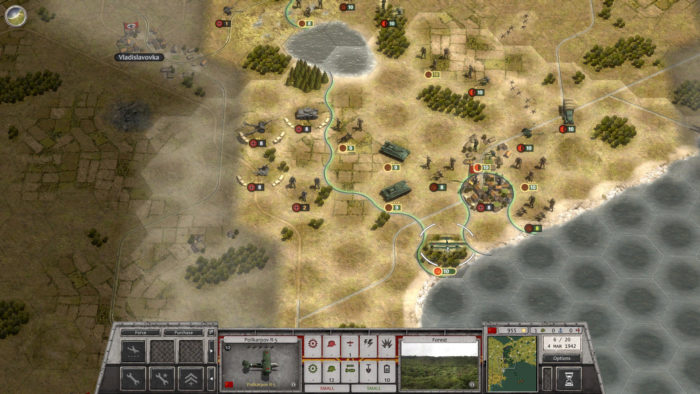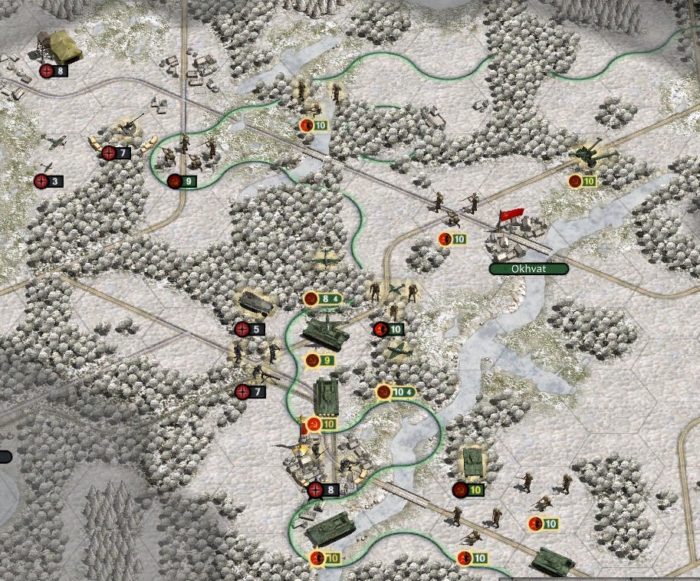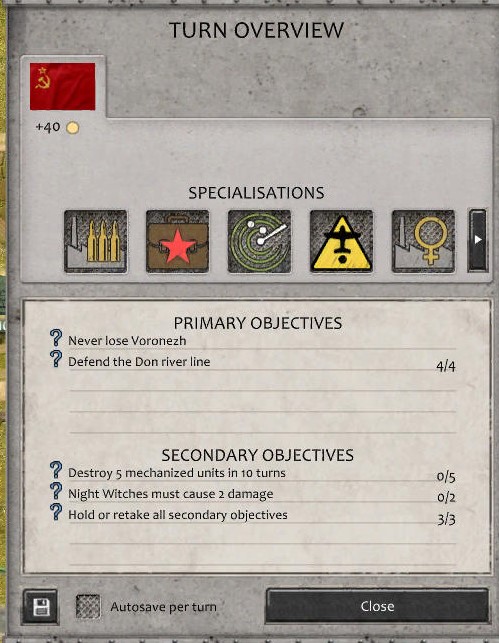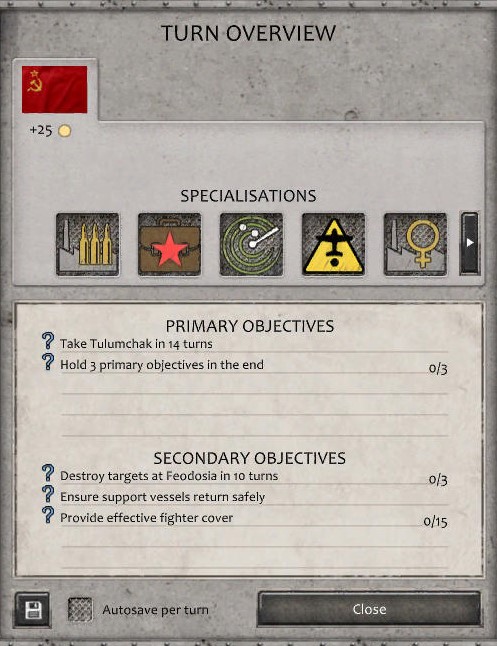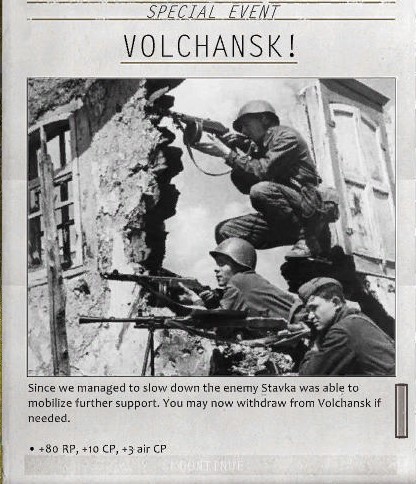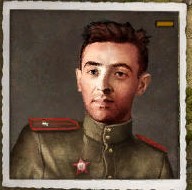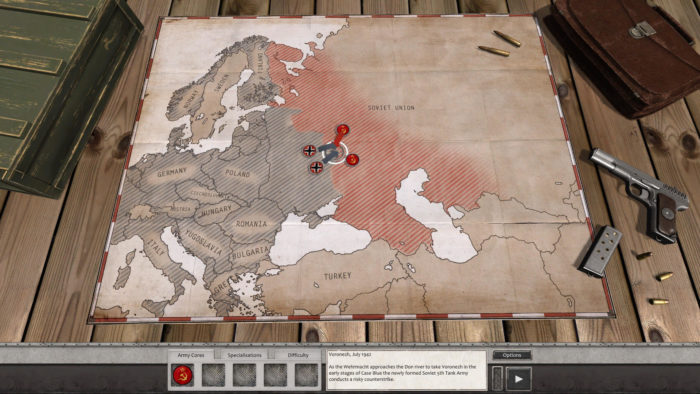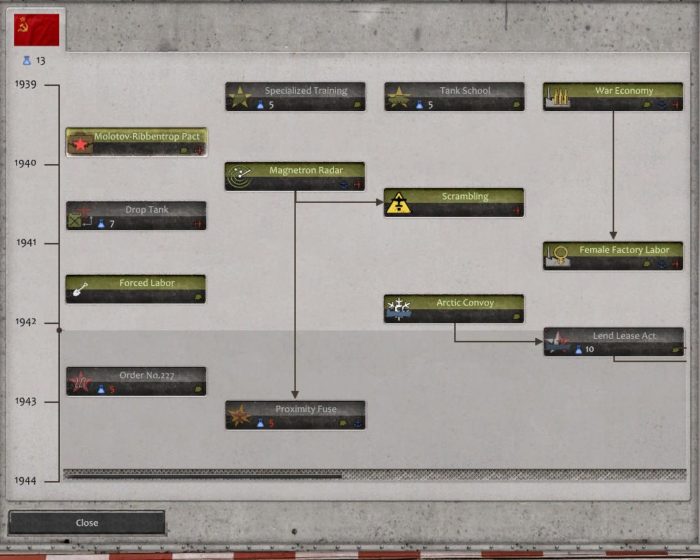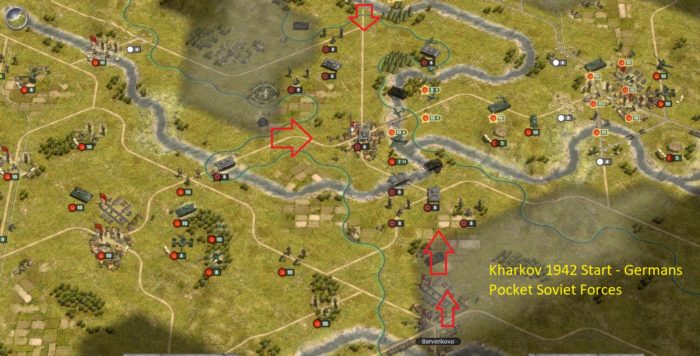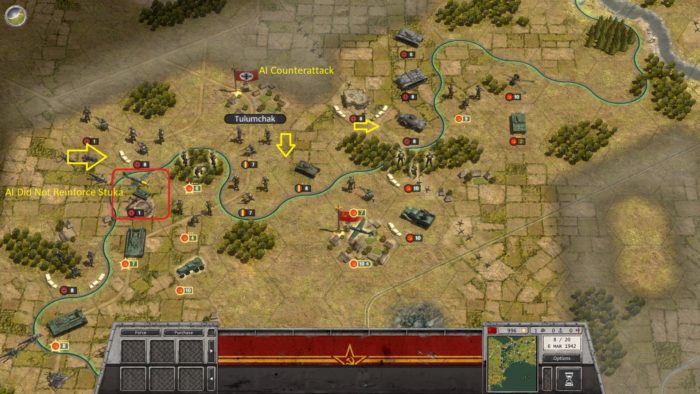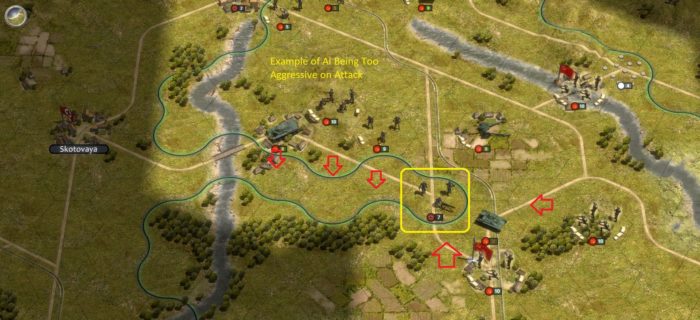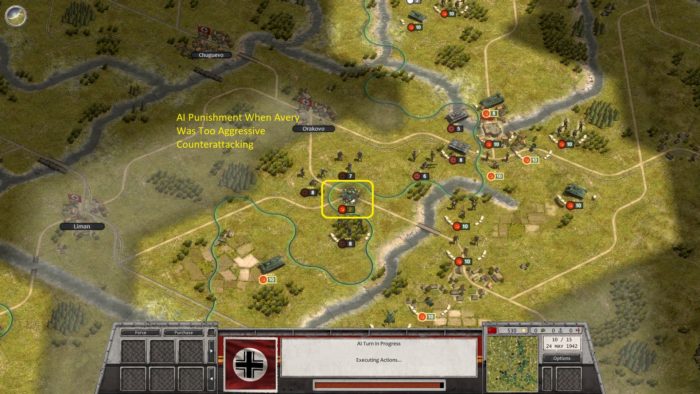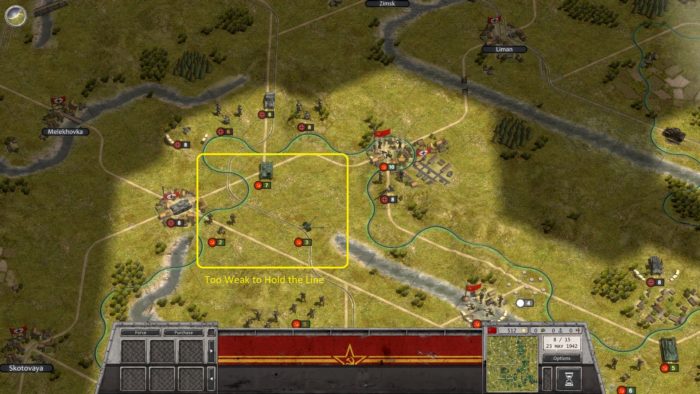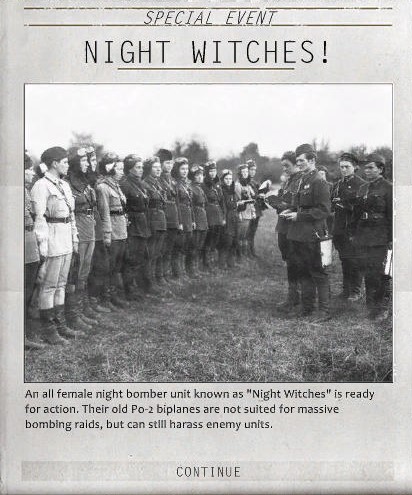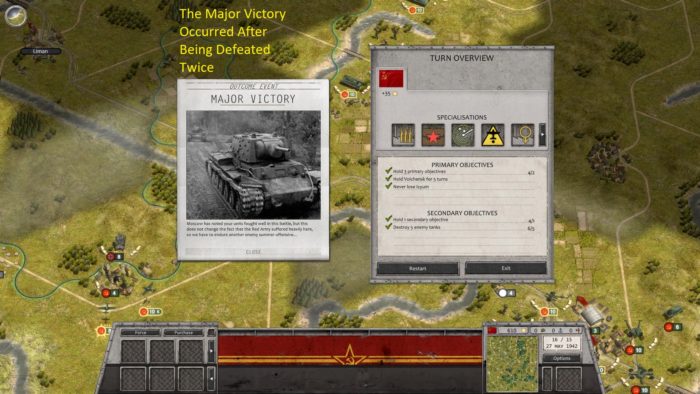Grogheads Reviews! Order of Battle: Red Steel
Order of Battle: Red Steel is Slitherine’s second DLC in the trilogy of campaigns fought from the perspective of the Soviet Union. The campaign continues right after the end of the Red Star DLC, and players can import their veteran core army saved in Red Star and play them in the new DLC with all previously unlocked commanders and specializations. Join Avery Abernethy and a resurgent Soviet Army as they put the German war machine and Slitherine’s latest DLC title to the test.
By: Avery Abernethy,
Red Steel is the second Order of Battle release placing you in command of Red Army units. There are fourteen scenarios in the Red Steel campaign starting with the Red Army’s 1942 Winter Offensive repelling the German Army further away from Moscow. This review is based on more than twenty hours of play and finishing more than a third of the campaign on the Lieutenant level. Slitherine provided a press copy for this review.
Like the predecessor release Red Star, players have a wide variety of battles. The first three scenarios in early 1942 are winter offenses against relatively weak German opposition. Staritsa requires you to push the Germans further away from Moscow. Toropets-Kholm is an offense where bad terrain and weather may be your greatest obstacle to victory. Players will see a lot of snow and mud in early scenarios.
Following scenarios are defending against Germany’s Spring, 1942 offensives. You take command at the Battle of Parpach Narrows on the Crimean Front coordinating a fighting retreat including limited naval warfare defending ships evacuating troops and wounded. All scenarios include primary and secondary victory goals. Primary goals determine victory or defeat while achieving secondary goals provide additional resource points, units or leaders.
Some scenarios impose penalties if you use too many armor units because they are being withdrawn to prepare for a future counter-attack. In other scenarios some units on the map are commanded by other leaders (the AI) and are not under your direct command. Russian units under AI command represent fleeing wounded or troops ordered to hold a flank while your units advance.
Leaders can be attached to individual units providing increased combat effectiveness. The best leaders provide bonuses to all units in a limited vicinity. Leaders can be hurt in combat and removed from play for short or long periods of time, but eventually even the most severely wounded leader comes back to the front. The Germans have their leaders which improve the performance of their units.
Red Steel jumps around the Russian Front with scenarios in the North around Leningrad, around Moscow, and as far South as the Baltic Sea. The key battles around Stalingrad take place over four different scenarios. Red Steel’s final scenarios occur in Spring, 1943.
Achieving victory conditions brings technology points which can be spent to improve the performance of your forces.
Like the Eastern Front in 1942, the Russians have a variety of situations ranging from pure offensive actions against weak defenders to being out-gunned against the German Offense. The difficulty of Red Steel increases substantially in the fifth scenario defending against the German attack at Kharkov in 1942.
I restarted several scenarios to try different strategies. I restarted the Kharkov, 1942 scenario three times because my inept troop placement and the powerful German pincer attack doomed me to defeat.
Good strategy and tactics are rewarded, but poor play will result in STAFKA sending in the commissars to “reward you for failing the Motherland.”
The AI can be challenging and excels at isolating and destroying exposed units. Logistics is important. Units out of supply are weakened and easily destroyed. The AI is adept at infiltrating units behind your lines to disrupt supply and communication. Like most games, the AI is better on defense than offense. However, the AI will mount successful combined arms attacks including using tactical bombers to eliminate nearly destroyed defenders.
As the series has progressed, the AI has become much better at reinforcing severely damaged ground units. However, the AI still will not consistently reinforce air units.
The Axis launched a combined-arms counterattack and came close to isolating key units in the Russian Offensive. At the same time, they are attacking with a Stuka down to one strength point instead of holding it back for reinforcements. It is possible for astute players to occasionally take advantage of the aggressive nature of the AI by exposing very weak units in the center with strong flanks able to encircle the attackers on the following turn.
However, the AI also punished me when I launched a counter-attack without sufficient flank support. Ah well, they died well for the Motherland.
Sometimes you have to retreat your units for reinforcements if you wish them to survive.
Red Steel incorporates information on other Russian Front battles as news flashes between scenarios. Occasionally minor, but interesting historical units are included in a battle like the Night Witches.
The game ran smoothly during my 20+ hours of play aside from two small bugs. The first bug was due to my running a Steam copy of Order of Battle WW2 and a different copy housed on my hard drive. Starting a game on one installation turned on the music and game tips on the other installation. This was quite minor, easily corrected, and should not occur unless two different versions of the game are run on the same computer. The other bug was both minor and weird. I needed to remove motorized transport from an engineering unit to fit within scenario command points limits. Upon removing the trucks, the engineering unit converted into an infantry conscript unit. The same result occurred when removing truck transportation from an anti-tank gun. This result may be due to the press copy used in this review. If not, minor bugs in previous releases were quickly corrected on the first patch.
Red Steel can be played without owning previous Order of Battle WW2 releases. However, if you saved your core force from completing the Red Star campaign it can be easily imported into the beginning of Red Steel. I like this feature because my core force was experienced, balanced, and had accumulated multiple leaders which improved unit effectiveness. I also rename units to clearly identify core units and my unit names were included when the core force was imported.
I strongly urge players to rename their units to enable better reinforcement and upgrade decisions. Early in the game players lack the points to upgrade or use elite replacements for most non-core units. Infantry, fighter aircraft, and armor are all upgradeable prior to the fifth scenario – Kharkov. Players lacking the points to upgrade their units will suffer when defending against the German onslaught in the fifth scenario of the campaign.
Red Steel can be played against the AI running the Germans and their allies. Human opponents can be played using either hotseat or email games.
The Aristocrats Studio developed the game. Modding tools have been provided to the community. Modders have done excellent work and Slitherine/The Aristocrats provide a modders forum for those interested in undertaking these projects or sharing their scenarios and campaigns. I have played all official Order of Battle releases and several campaigns developed by modders. Providing modding tools to the gaming community has greatly increased my enjoyment of this series.
There are multiple difficulty levels available and I played on the second of five difficulty levels. As Order of Battle has developed the campaigns have become more challenging. I prefer a challenge when compared to a listless or easily beaten AI – although it was only on the third try that I won the Kharkov scenario.
With adjustable difficulty levels every player should be able to find their difficulty level sweet spot.
Overall, the fourteen scenario Red Steel campaign is a strong offering in the Order of Battle series. Players must attack and defend across the Eastern Front. Purchasers should get a lot of gaming enjoyment for their $14.99. I have enjoyed Red Steel and look forward to completing the campaign. If you like Eastern Front wargames or enjoyed previous Order of Battle releases, you will probably gain great enjoyment playing Red Steel.
I plan to write a brief follow-up after finishing the campaign.
About the author: Avery Abernethy is gainfully retired and enjoys a wide variety of strategy, war, and role-playing games. He is blessed with a wife who is not annoyed with his gaming habit. They enjoy playing cooperative tabletop games together.
Chat about it below, or in our forums, or hit our FaceBook page >>


